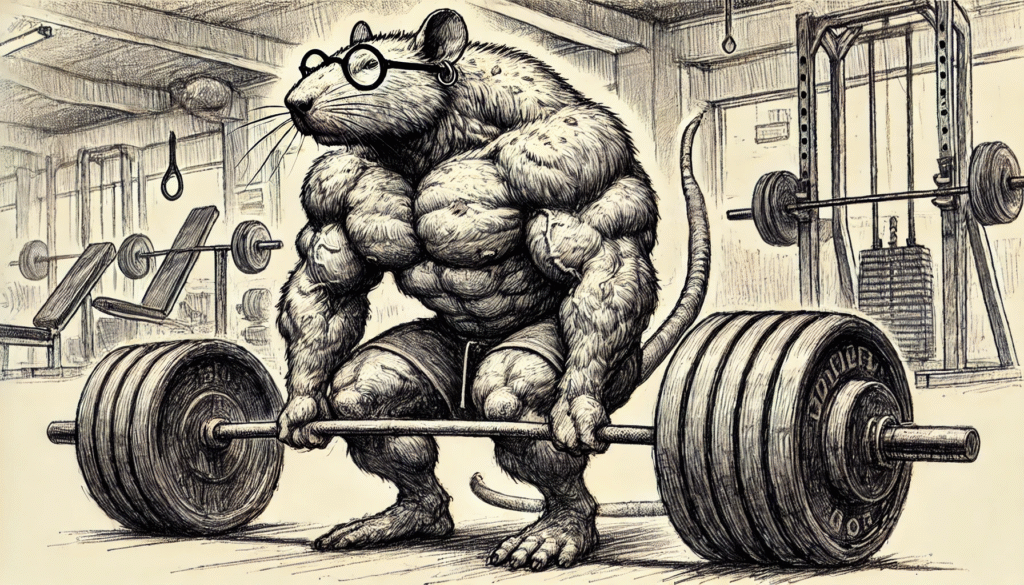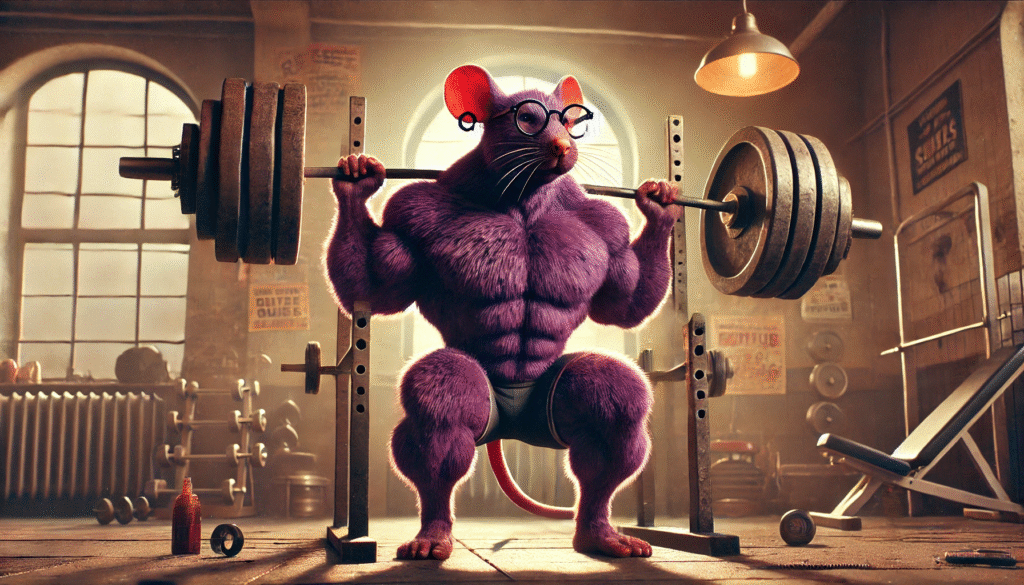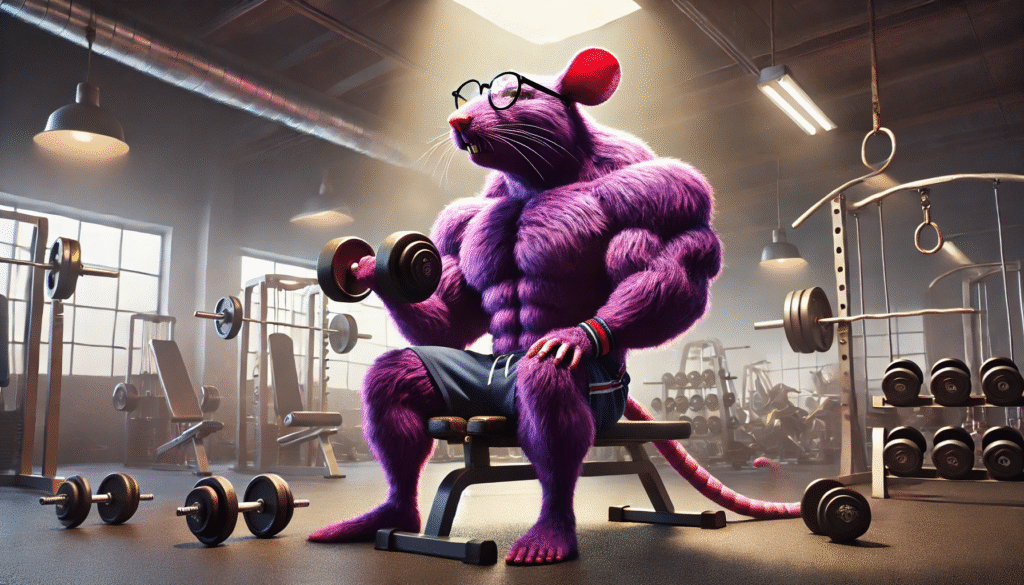Beginner’s Guide To A Full Body Workout Routine…….
What Is a Full Body Workout Plan?
A full body workout routine is a simple way to exercise all the big muscles in your body at once. This means you work your arms, legs, chest, back, and core in one session. It’s a smart plan for anyone, especially if you are just getting started. You don’t have to worry about picking different muscles each day.
Many beginners wonder, what is a full body workout plan? It’s just a way to make sure you don’t miss any part of your body. You move from one exercise to another, working different muscles. This helps you stay balanced and strong.
Split workouts, where you work one or two muscles at a time, can be harder to follow. That’s why a full body workout is a good choice for beginners. It’s easy to understand and easy to stick with. And when you stick with something, you see results.
This beginner’s guide to a full body workout will show you how to start. You’ll learn why this routine works and how it can help you feel better and get stronger.
Why Beginners Should Choose Full Body Workouts.
One of the biggest benefits of a full body workout routine is how simple it is. You don’t need to go to the gym every day. Just a few times a week can make a big difference. This helps you save time and still reach your fitness goals.
For beginners, a full body workout routine means you don’t have to plan something new each day. You can repeat the same exercises and still get strong. This makes it easier to build a habit that lasts.
Also, how to build a full body workout is not hard. You pick a few moves for each muscle group and do them together. It’s easy to follow, and your body will feel the difference.
Whether you want to lose weight, gain strength, or just feel healthier, a full body workout helps with all of that. This plan can help you start strong and stay on track. You’ll feel better inside and out as you stick with it.

The Benefits of a Full Body Workout Routine.
Why Full Body Workouts Save Time and Build Balance.
One of the best benefits of a full body workout routine is saving time. You don’t need to spend hours at the gym. In just one session, you work all the big muscles. This makes it easier to fit exercise into a busy day.
Another great thing is balanced strength. With a full body workout, you use your arms, legs, back, and more every time. This keeps your body strong all over. You won’t have to worry about one part getting left behind.
If you are new to this, the beginner’s guide to a full body workout can help you stay on track. Less time at the gym and more time feeling good. That’s why many people choose this type of workout.
You can start with simple moves. Then as you learn how to build a full body workout, you can add more. It grows with you and your goals.
Burn More Calories and Feel Better Every Day.
Another cool part of a full body workout routine is burning calories. Your body keeps working even after you stop. This is called the afterburn effect. It helps you burn more fat, even when you’re resting.
What is a full body workout plan good for? It helps you get strong, move better, and feel more energy. It helps with heart health too. So, it’s not just about muscles, but about being healthy all over.
You can change your workout to fit you. That’s one of the best benefits of a full body workout routine. Go easy when starting, and go harder when you’re ready. This keeps things fun and helps you grow.
Whether you’re new or have some experience, a full body workout gives you many wins. You save time, get strong all over, and feel great. That’s why many follow this simple, smart way to get fit.
Getting Started: How to Build a Full Body Workout.
Setting Goals and Making a Simple Plan.
Starting a full body workout routine may feel hard, but it doesn’t have to be. Take small steps and focus on what you want to achieve. Do you want to get stronger, lose weight, or just feel better? Once you know your goal, you can build the right plan for you.
The beginner’s guide to a full body workout says setting easy, real goals is important. Don’t try to be perfect right away. Instead, look for small wins. Maybe you can lift a little more, do more push-ups, or stay on track each week.
Think about how often you can work out. Most people start with two or three days each week. As you feel stronger, you can add more. Keep your workouts around 45 minutes to an hour. This is enough time to get good results without feeling too tired.
Adding different moves helps too. Doing new exercises keeps it fun and works all your muscles. Mix strength moves like squats with cardio like jumping jacks. This makes a full body workout more exciting and useful.
Creating a Fun and Flexible Routine.
There’s no perfect way to exercise. How to build a full body workout depends on what feels right for you. If something doesn’t feel good, change it. Your plan should fit your life and help you feel strong.
A great way to stay on track is to make a weekly plan. Maybe you work out Monday, Wednesday, and Friday. Leave days in between to rest. Rest is just as important as the workouts.
Following a plan helps you not give up. You know what to do and when to do it. This makes it easier to stick with your full body workout routine over time. You can also adjust it as you grow stronger.
The benefits of a full body workout routine grow as you do. You save time, build strength, and feel better. Keep it simple, keep it fun, and listen to your body. Soon, your workout will feel like a normal, healthy part of your life.

Essential Equipment for Your Full Body Workout.
Start Simple and Build Up.
You don’t need fancy gear to follow a beginner’s guide to a full body workout. A few basic items are enough to get started. Many people even begin with no equipment at all. You can still get strong using just your body.
Dumbbells are one of the best tools for your workouts. They help build strength in your arms, shoulders, and legs. You can do lots of moves with them, like curls and lunges. This makes your full body workout routine more complete.
Resistance bands are also great. They are light and easy to carry. They add challenge to bodyweight moves without hurting your joints. That’s why they are perfect for beginners who want to protect their bodies.
Your own body weight is powerful too. Push-ups, squats, and planks need no tools at all. These exercises work your whole body. They are a great way to start a full body workout at home with no cost.
Add a Little More When You’re Ready.
When you’re ready to try more, add a stability ball. It helps with balance and core strength. It also makes your workouts more fun. This can keep you from getting bored and help you stick to the plan.
A jump rope is another smart tool. It’s cheap and easy to use. It also gives you great cardio and helps with foot speed. Just a few minutes a day can boost your heart health.
Setting up a workout space at home is easy with these tools. They don’t take up much room. You can tuck them in a corner or under a bed. That’s why many people who follow a full body workout routine do it right at home.
If you’re wondering how to build a full body workout, start with what you have. Then slowly add more as you grow stronger. The key is to keep it simple, fun, and right for you. That’s one of the best benefits of a full body workout routine—it fits your life.
Beginner Full Body Workout Split – Option 1: Classic 3-Day Split (Full Body Each Session)
| Day | Focus | Exercises (Sample) |
|---|---|---|
| Monday | Full Body | Squats, Push-Ups, Bent-Over Rows, Plank, Dumbbell Curls |
| Wednesday | Full Body | Lunges, Dumbbell Press, Resistance Band Rows, Side Plank, Calf Raises |
| Friday | Full Body | Glute Bridges, Overhead Press, Lat Pulldowns (or Bands), Wall Sit, Bicycle Crunches |
Beginner Full Body Workout Split – Option 2: Strength + Cardio Mix
| Day | Focus | Exercises (Sample) |
|---|---|---|
| Monday | Strength + Core | Goblet Squats, Push-Ups, Dumbbell Rows, Leg Raises, Russian Twists |
| Wednesday | Cardio + Mobility | Jump Rope (1 min x 5), High Knees, Arm Circles, Walking Lunges, Stretching |
| Friday | Strength + Balance | Deadlifts (light), Step-Ups, Stability Ball Press, Plank Holds, Bird Dogs |
Designing the Ultimate Beginner’s Guide to a Full Body Workout.
Choosing the Right Exercises.
Building a smart full body workout routine means picking exercises for every major muscle. That includes your arms, chest, legs, back, and core. Think of it like a healthy meal—you need a mix to stay strong and balanced. Quit being soft on knowledge—knowing which muscles you’re working helps you train with purpose.
Some of the best moves are simple and effective. Try squats for legs, push-ups for arms and chest, rows for your back, and planks for your core. These exercises work well together and cover all the big areas. When you understand how these movements help, you’ll stop skipping the hard stuff and get better results.
This beginner’s guide to exercise isn’t just about doing random moves. It’s about creating a smart plan. By using these basic exercises in each session, you help your body stay strong from top to bottom. Quit being soft on knowledge—plan with intention, not guesswork.
The benefits of a full body workout routine come from doing all the right moves together. You’ll build strength, improve balance, and boost endurance—all in one workout. Know why each move matters, and you’ll push harder with more confidence.
Creating a Weekly Workout Plan.
Planning your week helps you stay on track. A good beginner’s guide to a full body workout might include three or four workout days each week. That gives your body time to rest and get stronger. Quit being soft on knowledge—use a real plan, not guesswork.
Try this: work out Monday, Wednesday, and Friday. Rest or do light stretching on the other days. This keeps your muscles fresh and helps prevent injury or burnout. When you know the “why” behind rest days, you’ll take them seriously instead of skipping ahead.
Make sure to warm up before each session. A 5–10 minute warm-up like walking or jumping jacks gets your muscles ready. At the end, cool down with slow stretches to help your body relax and recover. Skip this, and you risk getting hurt—so don’t take shortcuts.
Remember, what is a full body workout plan? It’s not about doing everything at once. It’s about doing smart moves often, with the right rest and recovery. That’s how to make progress and keep going strong. Quit being soft on knowledge—train smarter, not just harder.

Proper Techniques to Ensure Safety and Effectiveness.
Mastering Form and Avoiding Injury.
In any beginner’s guide to a full body workout, learning proper form is one of the most important things. It’s not about how many reps you do—it’s about doing them right. Good form keeps you safe and makes sure the correct muscles are doing the work. When your posture is right, you also reduce strain on your joints, which helps you stay pain-free.
Let’s take squats, for example. Your feet should stay flat on the ground. Your knees should stay behind your toes, and your chest should stay lifted. These small details can make a big difference. Practicing proper form helps you avoid common injuries and gets you better results over time. So always take the time to learn each move before speeding through it.
If you skip learning the basics, you might end up doing more harm than good. The benefits of a full body workout routine only show up when your technique is solid. Don’t rush. Slow down, use a mirror, or even film yourself to check your form. Small changes now can help you build strength safely for years to come.
Learning how to build a full body workout isn’t just about what exercises to do—it’s also about how you do them. Focus on clean, controlled movements. Use lighter weights when needed to master technique first. Once your form is locked in, you can safely add more weight and push harder.
Breathing, Resting, and Getting Help.
Breathing is another key part of your workout that many people forget. It might seem simple, but breathing the right way helps you stay strong and focused. Try this: breathe in during the easy part of the move, and breathe out when you’re working hard. This rhythm keeps your core stable and your muscles full of oxygen.
Rest is not just a break—it’s a key part of the beginner’s guide to fitness. When you rest, your muscles rebuild and grow stronger. That’s why a full body workout plan should always include recovery time. If you work out too much without rest, you risk injury and burnout. Always give your body time to heal.
If you’re ever unsure about your technique, it’s okay to ask for help. A personal trainer, even just for one session, can teach you a lot. They can show you how to fix your form, use equipment safely, and build confidence. A trainer can even help shape your plan based on your body and goals.
Following the right technique and pacing your workouts makes all the difference. The benefits of a full body workout routine are only possible when you train smart. Pay attention to the little things—like breathing, posture, and rest. These habits will keep you safe and help you stay strong as you move forward in your fitness journey.
Nutrition and Recovery: Key Elements of an Effective Routine.
Eating Right to Support Your Workout.
Food plays a big role in your fitness journey. To get the most out of a full body workout routine, your body needs the right fuel. Eating healthy foods helps you feel strong during workouts and recover after them. A good diet also gives your body what it needs to build muscle and stay energized throughout the day.
The beginner’s guide to fitness always includes eating whole foods. This means things like fruits, vegetables, lean meats, nuts, and grains. These foods give your body the vitamins and nutrients it needs. When you eat better, you feel better—and that makes it easier to stay motivated with your workouts.
Learning about macronutrients is also important. These are proteins, carbs, and fats. Each one helps your body in a different way. Protein helps repair your muscles. Carbs give you energy to push through a workout. Fats help your body work properly and stay healthy. When you balance these three in your meals, your body performs at its best.
The benefits of a full body workout routine really show when your nutrition supports your training. You’ll notice better energy, quicker recovery, and more strength. Knowing how to build a full body workout includes understanding what to eat before and after you exercise.
Hydration, Rest, and Active Recovery.
Water is just as important as food. Staying hydrated keeps your muscles and joints working well. It also helps you stay cool and focused. Try to drink water before, during, and after your workouts. This will help you feel your best and reduce the risk of cramps or headaches.
Rest days are a key part of a full body workout plan. Some people think taking a day off means they’re being lazy—but it’s actually the opposite. Rest is when your muscles grow and repair. Without it, you may feel sore or even get injured. That’s why every beginner’s guide to fitness includes rest in the weekly plan.
Recovery doesn’t stop with rest. You can do light stretching, foam rolling, or even take a short walk. These help your body feel better and stay flexible. They also improve blood flow and prevent tight muscles after tough workouts. These simple tools can be used on your off days or right after training.
When you pair smart nutrition with good recovery habits, your workouts become more effective. The benefits of a full body workout routine depend on more than just the time you spend exercising. It’s about how you treat your body outside the gym too. Eat well, drink water, rest often, and move gently. These steps help you stay on track and reach your goals faster.

Tracking Progress and Staying Motivated.
Why Tracking Your Progress Matters.
Keeping track of your workouts is one of the smartest things you can do. When you write down your sets, reps, or weights, you can see how much you’ve grown. Watching those numbers go up feels good and keeps you moving forward. In this beginner’s guide to a full body workout, tracking is key to success.
You don’t need anything fancy to start. A notebook or a simple app on your phone works great. Write down how many push-ups you did or how long you held a plank. Over time, you’ll notice real changes. This shows that your hard work is paying off, even when the mirror isn’t showing it yet.
Using tools like fitness apps or smartwatches can give you even more info. You can check your heart rate, steps, and calories burned. These numbers help you stay on target and even make working out more fun. When you hit your goals or close those activity rings, it feels like a win.
The benefits of a full body workout routine are easier to see when you keep records. It helps you know when to push harder or when to rest. It also keeps you focused, so you don’t just go through the motions. You stay engaged and goal-driven.
Keeping the Fun and Focus Alive.
Even the best workout plans hit a pause sometimes. That’s called a plateau, and it can feel frustrating. But don’t worry—your body is just getting used to the same moves. This is your chance to switch things up. Try new exercises, increase your weights, or add a little extra time. This will wake your body back up.
Adding new activities makes your full body workout feel fresh again. Try switching push-ups for dumbbell presses or squats for lunges. These small changes challenge your muscles in new ways. They also keep your mind excited and stop boredom before it starts.
Staying motivated isn’t just about results. It’s also about enjoying the process. Play music you love, grab a workout buddy, or try a fitness class. Having fun while you move keeps your mood up and helps you stick to your routine.
In the end, what is a full body workout plan without a little variety and fun? A plan that grows with you keeps things exciting and effective. When you track your wins and stay inspired, your fitness journey becomes something to look forward to, not something you have to do. That’s the power of staying motivated and keeping your eyes on the goal.
Troubleshooting Common Challenges.
Overcoming Time and Motivation Struggles.
Starting a full body workout routine can be exciting, but it comes with challenges too. One of the biggest problems for beginners is finding time. Life gets busy with work, school, or family. But even short sessions can make a difference. You can break up your workout into 10-minute chunks or fit it in early in the morning or during a lunch break.
Feeling unmotivated is also common, especially if results don’t come quickly. You might feel discouraged after a few days or weeks. But fitness takes time. Try setting small goals like doing one extra push-up or finishing all your sessions for the week. These wins will keep your spirits up and help you stay on track.
The beginner’s guide to fitness reminds us that change doesn’t happen overnight. Progress might be slow, but each workout brings you closer to your goal. Staying consistent is more important than being perfect. Remember the benefits of a full body workout routine—better energy, strength, and confidence—all of that comes with time.
Making a weekly workout plan is a good way to stay focused. If you plan for three or four sessions each week and include rest days, your body and mind will feel more balanced. This helps prevent burnout and keeps you from quitting too soon.
Listening to Your Body and Asking for Help.
Sometimes, people push too hard. Maybe you’re trying to do too much too fast. This can lead to sore muscles, exhaustion, or even injury. That’s why it’s important to listen to your body. If you’re tired or feeling pain, it’s okay to take a day off or lower the intensity. Rest is part of the plan in a full body workout routine.
Knowing how to build a full body workout means knowing when to pause. Your muscles grow and get stronger during rest. Overtraining doesn’t help you improve—it actually slows you down. Give yourself permission to take it easy when your body needs it.
If you feel stuck or unsure what to do next, don’t be afraid to ask for help. A personal trainer or fitness coach can offer support and guidance. They can check your form, help with new ideas, and create a plan that fits you. Even one session with a coach can teach you a lot.
In the end, every obstacle is a chance to learn. Whether it’s a busy schedule, lack of motivation, or sore muscles, you can find ways to overcome it. The beginner’s guide to a full body workout shows that success comes from patience, smart choices, and learning from mistakes. Keep going—you’re building a stronger, healthier you every step of the way.

Conclusion.
Starting Your Full Body Workout Journey.
Following this beginner’s guide to a full body workout is a smart way to begin your fitness journey. It’s simple, but it covers everything you need to get stronger and healthier. By using all your muscles in each session, you get more done in less time. This helps you build a habit that fits into your life.
The benefits of a full body workout routine are easy to see. You save time, build balanced strength, and feel more energy. It’s not just about looking good, but also feeling better each day. This routine can help you stay active without feeling too tired or bored.
Remember, a full body workout routine doesn’t have to be perfect. What matters most is staying consistent and doing your best. If you miss a day, just start again. Keep going and you’ll see results over time. Small steps lead to big changes.
Now that you know how to build a full body workout, you can start today. Pick a few simple exercises, use good form, and enjoy the process. As you get stronger, you can add more to your plan. Keep learning and growing.
Sticking With Your Fitness Plan.
It’s normal to face challenges, but this beginner’s guide to fitness shows you how to deal with them. When time is short, you can still fit in quick workouts. When you feel tired, rest and then come back stronger. Every step counts.
Tracking your progress helps you stay on track. Write down what you do in each full body workout. Celebrate small wins, like doing more push-ups or feeling less sore. These wins keep you going and make the journey fun.
Try to enjoy the process, not just the results. Make your workouts fun by adding music or inviting a friend. This makes it easier to stick with a full body workout routine. When you enjoy it, you’ll want to keep doing it.
In the end, what is a full body workout plan? It’s a simple, smart way to get fit and stay healthy. It’s about working all parts of your body and feeling good every day. Follow these tips, listen to your body, and keep going—you’ve got this!
Check Out Our YouTube Channel!
Expert Tips & Tricks.
Fitness Culture.
Nutrition Guidance.
Workout Plans.



